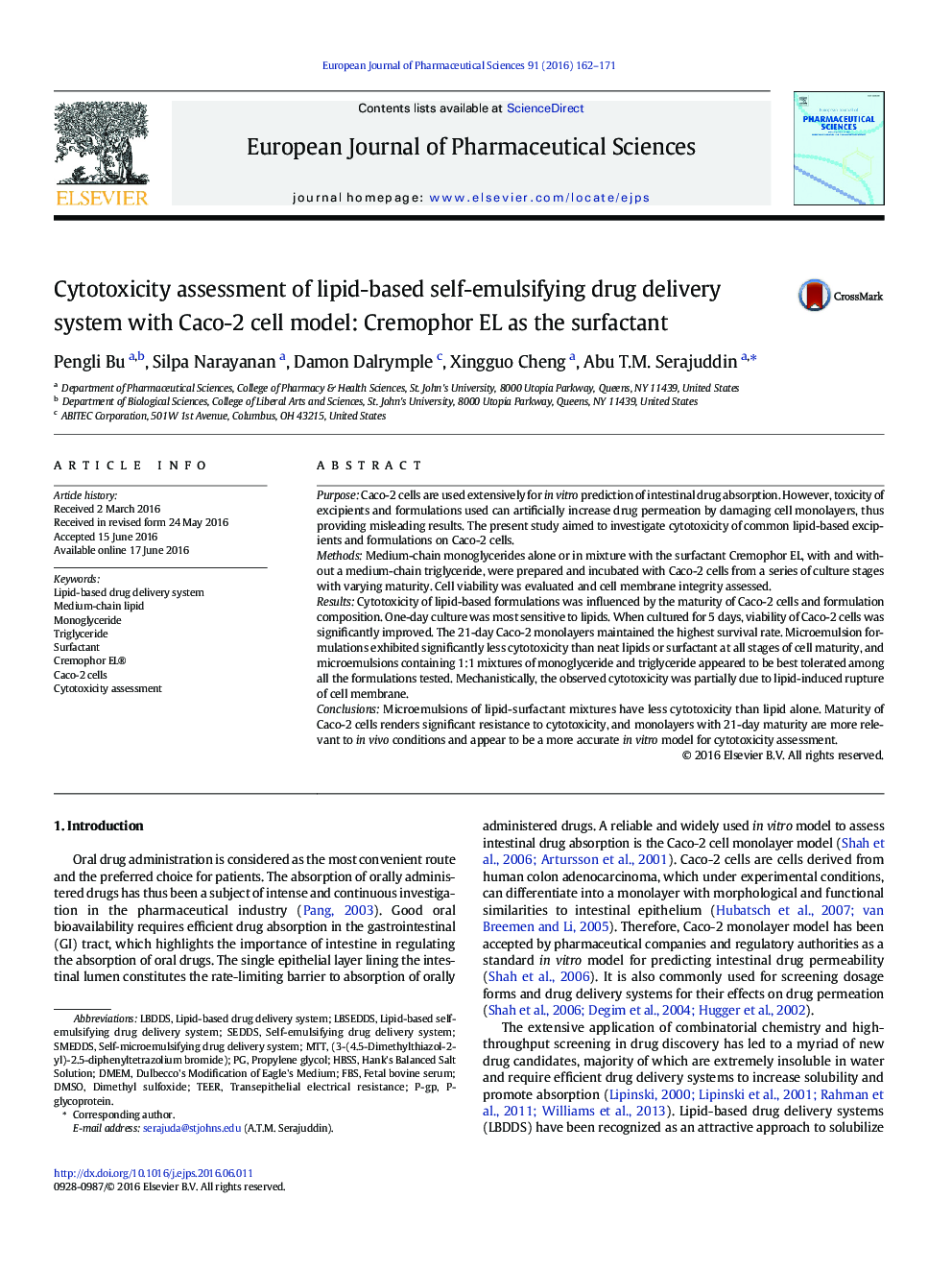| Article ID | Journal | Published Year | Pages | File Type |
|---|---|---|---|---|
| 5809519 | European Journal of Pharmaceutical Sciences | 2016 | 10 Pages |
PurposeCaco-2 cells are used extensively for in vitro prediction of intestinal drug absorption. However, toxicity of excipients and formulations used can artificially increase drug permeation by damaging cell monolayers, thus providing misleading results. The present study aimed to investigate cytotoxicity of common lipid-based excipients and formulations on Caco-2 cells.MethodsMedium-chain monoglycerides alone or in mixture with the surfactant Cremophor EL, with and without a medium-chain triglyceride, were prepared and incubated with Caco-2 cells from a series of culture stages with varying maturity. Cell viability was evaluated and cell membrane integrity assessed.ResultsCytotoxicity of lipid-based formulations was influenced by the maturity of Caco-2 cells and formulation composition. One-day culture was most sensitive to lipids. When cultured for 5Â days, viability of Caco-2 cells was significantly improved. The 21-day Caco-2 monolayers maintained the highest survival rate. Microemulsion formulations exhibited significantly less cytotoxicity than neat lipids or surfactant at all stages of cell maturity, and microemulsions containing 1:1 mixtures of monoglyceride and triglyceride appeared to be best tolerated among all the formulations tested. Mechanistically, the observed cytotoxicity was partially due to lipid-induced rupture of cell membrane.ConclusionsMicroemulsions of lipid-surfactant mixtures have less cytotoxicity than lipid alone. Maturity of Caco-2 cells renders significant resistance to cytotoxicity, and monolayers with 21-day maturity are more relevant to in vivo conditions and appear to be a more accurate in vitro model for cytotoxicity assessment.
Graphical abstractDownload high-res image (128KB)Download full-size image
